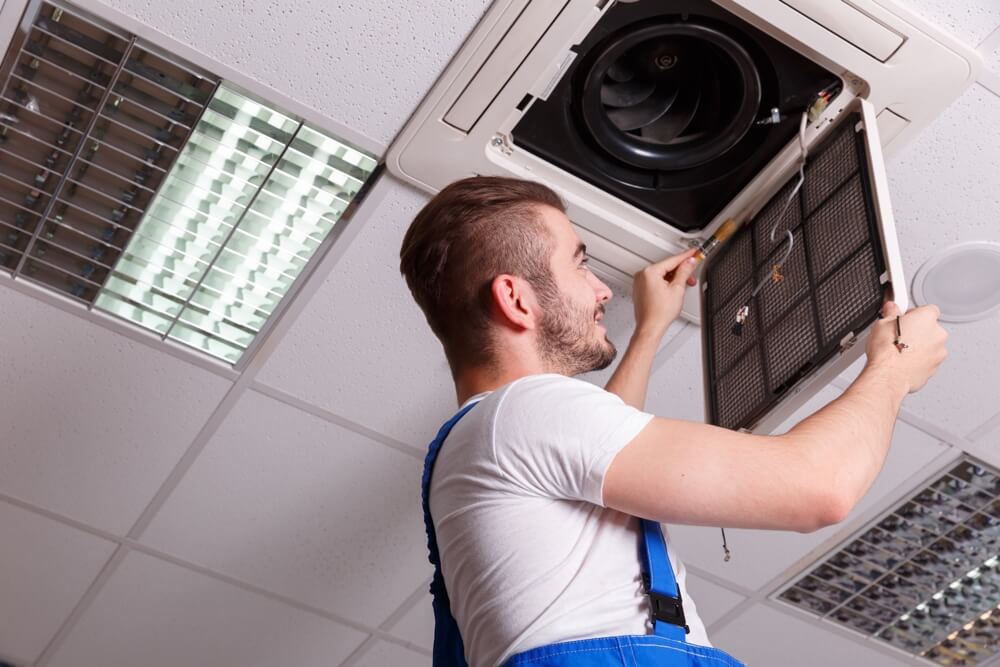
In the array of household chores, cleaning the dryer vent often gets overlooked. However, this seemingly minor task holds significant importance for both safety and efficiency in your home. An unclean dryer vent can lead to several risks, ranging from fires to health hazards. Third Gen HVAC, serving Temecula Valley, emphasizes the importance of understanding these risks and taking proactive steps for maintenance.
The Overlooked Hazard in Your Home
The dryer vent, a crucial component of your laundry system, can become a hidden danger if not maintained properly. Lint and debris accumulation in the vent can cause several issues, making it imperative to understand and address these risks.
- Fire Hazard: A Real and Present Danger The primary concern with an unclean dryer vent is the risk of fire. The Consumer Product Safety Commission reports that lint-clogged dryer vents are a leading cause of household fires. Lint, a highly combustible material, can accumulate and obstruct airflow, leading to overheating and potentially causing a fire. The National Fire Protection Association highlights the importance of regular cleaning to prevent such fires.
- Carbon Monoxide Poisoning: The Invisible Threat For homes with gas dryers, a clogged vent can pose a serious risk of carbon monoxide (CO) poisoning. A blocked vent impedes the expulsion of CO, leading to its buildup inside the home. The Consumer Product Safety Commission warns about the dangers of CO and emphasizes the need for proper vent maintenance to prevent potential poisoning.
- Mold and Health Complications An often-overlooked consequence of a blocked dryer vent is the growth of mold. Trapped moisture from inadequate venting creates an ideal environment for mold and mildew, which can lead to various health issues, particularly respiratory problems. This not only affects the quality of indoor air but can also cause damage to your home and belongings.
- Energy Inefficiency and Higher Costs A clogged dryer vent forces the dryer to work harder and run longer, leading to increased energy consumption. This inefficiency is not only bad for the environment but also results in higher utility bills. The U.S. Department of Energy notes that regular vent cleaning can significantly improve the energy efficiency of your dryer.
- Wear and Tear on Clothing The additional heat and extended drying times can also be detrimental to your clothing. Fabrics may deteriorate faster, leading to a shortened lifespan for your garments. This not only affects the quality and appearance of your clothes but also leads to more frequent replacements, impacting your budget.
Maintenance: A Key to Safety
Regular maintenance of the dryer vent is crucial to avoid these risks. Here are some tips for effective dryer vent maintenance:
- Regular Cleaning: Experts suggest cleaning the dryer vent at least once a year. For households with high laundry frequency, more frequent cleanings may be necessary.
- Professional Inspection: While DIY cleaning is possible, professional inspection and cleaning ensure a thorough job, especially for vents with complex installations or hard-to-reach areas.
Third Gen HVAC: Ensuring Your Safety
Third Gen HVAC, proudly serving Temecula Valley, specializes in maintaining the safety and efficiency of your home appliances. Our skilled professionals are adept at conducting thorough inspections and cleanings of dryer vents, safeguarding your home against the risks of fire, health hazards, and inefficiency.
Understanding and addressing the risks of an unclean dryer vent are essential for maintaining a safe and efficient home. Regular maintenance not only prevents potential disasters but also contributes to the longevity and performance of your appliances. If you’re in the Temecula Valley and seeking professional dryer vent cleaning services, Third Gen HVAC is here to help. Keep your home safe and efficient with our expert services and ensure peace of mind for you and your family.
